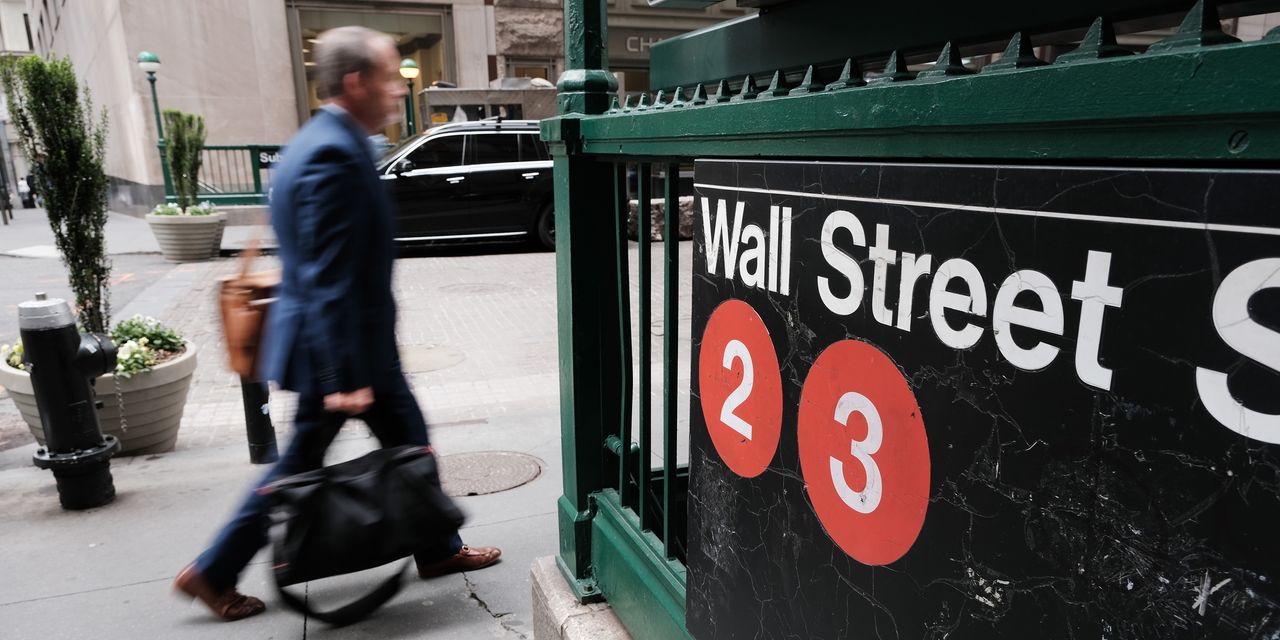Considering the way this year has gone, one would expect the Federal Reserve’s likely pause in interest-rate hikes to send the stock market higher. That’s not what happened—and for good reason.
The S&P 500 index had gained 7.7% this year, partially on hopes that the Fed will take a break. Economic growth has been slowing, dragging down inflation with it, providing Fed Chairman Jerome Powell with a reason to stop tightening monetary policy, if he so chooses. That’s a relief to the market, which struggled last year with some of the fastest rate hikes in history.
Yet the stock market dropped when the Fed raised rates by a quarter-point but indicated that a pause is, indeed, on the way. The
S&P 500
fell 0.8%, while the
Dow Jones Industrial Average
dropped 1.2%. Only the
Nasdaq Composite,
up 0.1%, finished higher.
We can easily dash off a few reasons for this past week’s decline. A market expecting a pause isn’t a market that rallies when it gets what it wants. And while the Fed did signal the end of rate hikes, it didn’t signal the beginning of rate cuts, leading some observers to refer to Powell’s action as a “hawkish pause.” But the biggest reason might be the continued collapse of bank stocks.
The
SPDR S&P Bank
exchange-traded fund (ticker: KBE) dropped 8.1% last week, despite the sale of
First Republic Bank
to
JPMorgan Chase
(JPM), which was supposed to end the crisis but seems to have accelerated it instead. High rates, remember, are one of the main reasons that banks are under pressure in the first place, as depositors leave for higher-yielding alternatives. Another increase—and a plan to stay high—won’t do much to help the situation.
“The Fed is not really thinking about what can go wrong with the banking system,” says Rhys Williams, chief investment officer at Spouting Rock Asset Management.
Powell also played down the possibility that the Fed could—or should—do anything about the debt ceiling. Treasury Secretary Janet Yellen has put the X-date at June 1, less than a month away. Financial markets are worried, even if the stock market isn’t. The cost of protecting against a U.S. default with credit default swaps has risen tenfold since the end of 2022, while Thursday’s auction of one-month Treasury bills saw yields hit a record high of 5.84%. Add it to the list of things the Fed is not really thinking about.
Of course, a stronger-than-expected jobs report did a lot to calm nerves about an imminent recession. But despite a big Friday gain, the S&P 500 was unable to get back to 4200, a key level that has acted as a ceiling on the index. And the longer the index remains unable to break through, the more likely it is that the next move will be lower. Evercore strategist Julian Emanuel puts the next support level at roughly 3800, down 8.1% from Friday’s close of 4136.25, and then a drop to its bear-market low of just under 3600.
“There are going to be much better risk/reward opportunities to add to stocks than there are now,” Emanuel says.
As the cliché goes: Patience, sometimes, is a virtue.
Write to Jacob Sonenshine at [email protected]
Read the full article here


